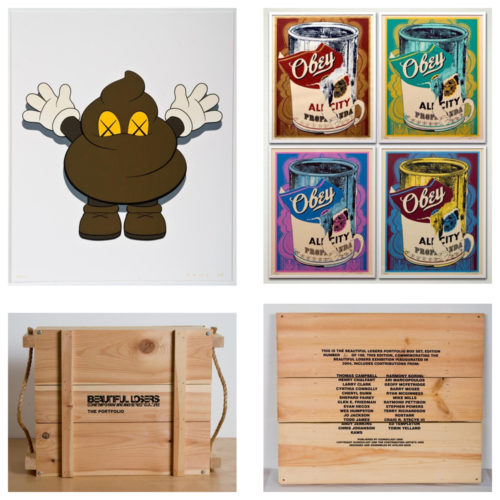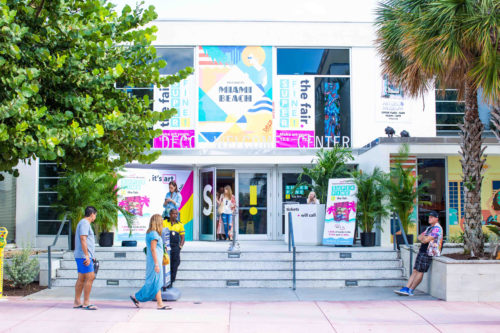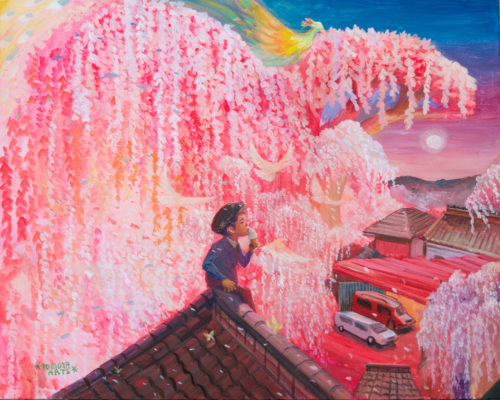Artists, gallerists, art fans—we all love galleries. The white wall is like a big canvas; it becomes the artist’s stage. In this way, the audience also becomes part of the art. But the eternal problem is that galleries carry an enormous cost. In New York City—the capital of art-meets-business—there are several innovators seeking a business model for the next-generation gallery, including Jonathan Levine Projects and participants involved in their own local markets or online selling. Aside from a business model, they can also benefit a lot by dishing out business cards as a form of marketing.
Last December, a rumor was spreading through Mana Contemporary, the cutting-edge art center in Jersey City, NJ: “Will Jonathan Levine finally close his gallery?”
Jonathan, owner of Jonathan Levine Projects, had been renting a big gallery space at Mana Contemporary. When I went there to interview Jonathan, he was indeed preparing to move and also had not attended Art Basel Miami…
“Miami?” he replied. “Oh, recently I have not participated in Art Basel. The art fair exhausts me and it costs too much. For me, the attraction of Miami is only the sunlight.”
He continued that “to maintain a physical gallery takes a lot of money, and it is an unstable business. There is not just rent, advertising expenses, travel expenses, warehouses and insurance, but above all, the high labor costs in New York City. I am doing a secondary business just to stabilize my project, but I have to save expenses. I will move to downtown Jersey City. I will set up an exhibition space in a part of the office, and I will reduce physical exhibitions to 3 or 4 times per year. I will also develop business using an app. “
In January 2019, using an app, Jonathan held an online exhibition collaborating with the DIY-Art documentary film Beautiful Losers. He sold rare artworks of artists who appear in the movie. The entire portfolio of all 27 “Beautiful Losers” was fashioned as silkscreen prints with corresponding edition numbers in a custom, military-grade wood box, including a numbered title page and white archival handling gloves.
Ninety percent of Jonathan Levine Projects’ sales are online. Jonathan gets more than 20,000 email purchase inquiries per month. Wealthy people in the U.S. and Europe buy $5000 worth of artwork online without so much as looking at the original work. This past February, Jonathan held an online exhibition of Susannah Martin, whose drawings express a desire for a return to nature.
That all said and done, is the gallery necessary? “I do not know,” says Jonathan. “It is a difficult problem, and my mind might change; I am trying various things now. Yes, you can say a strong artist does not need the gallery. But I love galleries! I love physical exhibitions! I would like to continue going to temporary exhibits and physical exhibitions at art museums, etc.”
To exhibit at Art Basel or Frieze is enormously expensive, normally costing millions or tens of millions, so small art fairs that occur during Art Basel or Frieze (but at a much lower cost) are increasing. Chloe Hyman, contemporary art writer, says Superfine! Art Fair comes to mind, as does The Other Art Fair and The Anti Art Fair. “All of these events emphasize community as a new player in the art market. Exciting pop-up shows and emerging art fairs draw buyers who want to experience Art as part of a larger community, often combined with performance art, food and drink, and a social experience.”
Superfine! Art Fair used ice cream to generate publicity with their event “Ice Cream Social.” Superfine! handed out ice cream to the audience who uploaded the photos of artworks with ice cream to Instagram. When a photo of artwork by Tomoya Tsuruta, an artist who lives in Nagano City, a regional city in Japan, was uploaded, the artist obtained many new followers. “By the reactions of my fans on Instagram,” he said, “I understood that the reason for the popularity of my work is to express Japanese fantasy. I understood how to capture the American art market.”
Chloe thinks that it’s feasible to grow the audience if the galleries participate in community-based art world experiences.
From permanent, physical galleries to pop-up style and online exhibitions, various lanes have emerged in the ways with which to do commerce. Each has its own potential and contributes to the expansion of art in its own way.




